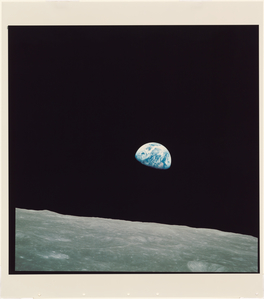American Innovation Leading the Way into the Future
By Greg Williams, Senior Energy Advisor
As I was watching the launch of the SpaceX Falcon 9 rocket earlier this month, I began to remember significant historical moments in my life that have impacted our lives today. I remember as a child watching Apollo 11 launch from the Kennedy Space Center on a small black and white television and its safe return. I also remember watching the launch of Apollo 13 in person, which was the landing which never took place.
My father worked at the phone company and told me that when we grew up that we would each have a personal phone and an individual phone number which would allow us to make and receive phone calls from any place on earth. Those phones my father was talking about in 1973 – 74 are today’s cell phones. Not only are they phones, they are cameras, radios and calculators and so on. The computing power of today’s cell phones can do more calculations quicker and have more memory power than the computers that sent our astronauts to the moon and back.
As a native Floridian, I visited Disney World many times and two of my favorite attractions were Tomorrowland, Walt Disney’s vision of the future and Spaceship Earth, offering a glimpse of innovation overtime and predictions of the future, It is absolutely amazing how accurate Mr. Disney’s predictions were in the 1960s to how we live today in the 21st century.
Up until the late 1950s our homes, business and economy were powered primarily by coal and other forms of fossil energy and hydropower. After World War II, the US government created the US Atomic Energy Commission to explore the peaceful benefits and opportunities of nuclear power. It was not until 1957 when Shipping Port Nuclear Power Plant in Pennsylvania became the first commercial nuclear power station to come on line and created a new way to generate electricity. We also have learned that fossil fuel is not the best form of energy sources and we began to think of alternative ways which were friendlier to our environment. Through innovation we learned how to capture the energy of the sun and turn it into electricity to power our society. Since the 1970s, we are finding new and innovative ways to power our vehicles away from the traditional sources of gasoline and diesel to electricity, ethanol, natural gas, hydrogen, propane and biodiesel to name a few. All of this was as a result of someone’s dreams, hard work and desires to create a healthier and safer environment.
At the Maryland Energy Administration (MEA) and our sister states’ energy offices, National Association of State Energy Officers, the National Governors’ Association, the Southern States Energy Board and several other non-governmental organizations are working together and sharing ideas on promoting reliable and cleaner ways to power our economy. In addition to developing energy policy for the governor, the state assembly and our state’s Public Service Commission, we also manage grants, loans, rebates, and tax incentives designed to help attain our state’s goals in energy reduction, renewable energy, climate action, and green jobs. Our many programs enable residents, businesses, non-profits, and local government organizations to implement energy efficiency upgrades and install renewable energy systems for a better and cleaner Maryland. To learn more about what we have to offer, click here to see more MEA grants.

James McDivitt, Ed White, Extravehicular Activity Gemini 4 Spacewalk 1965 photo credit The New York Public Library Digital Collection
As our nation moves toward a carbon free future, I am reminded of President Kennedy’s famous quote when he challenged America and its scientists and engineers to go to the Moon and back: “We choose to go to the Moon … and do the other things, not because they are easy, but because they are hard; because that goal will serve to organize and measure the best of our energies and skills, because that challenge is one that we are willing to accept, one we are unwilling to postpone, and one we intend to win, and the others, too” Seeing the SpaceX Falcon 9 rocket launch was an amazing example of American innovation and ingenuity and an historic moment for our country and its future. Once again, America is leading the world. Our future is bright because there is no challenge we will not take on for the sake of the environment, humankind and MEA takes that challenge seriously and we will be featuring our innovative programs over the weeks to come.
Senior Energy Advisor, Greg Williams is a former employee of the US Department of Energy where he served (2001 – 2009) as the Director of Intergovernmental Affairs in the Office of Congressional Affairs and also as the Director of Federal-State Outreach in their Office of Civilian Radioactive Waste Management (OCRWM).


 1-888-373-7888
1-888-373-7888 233733
233733